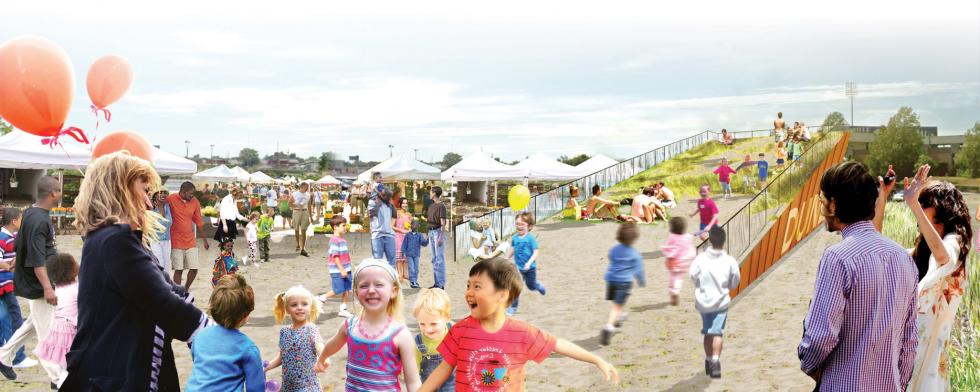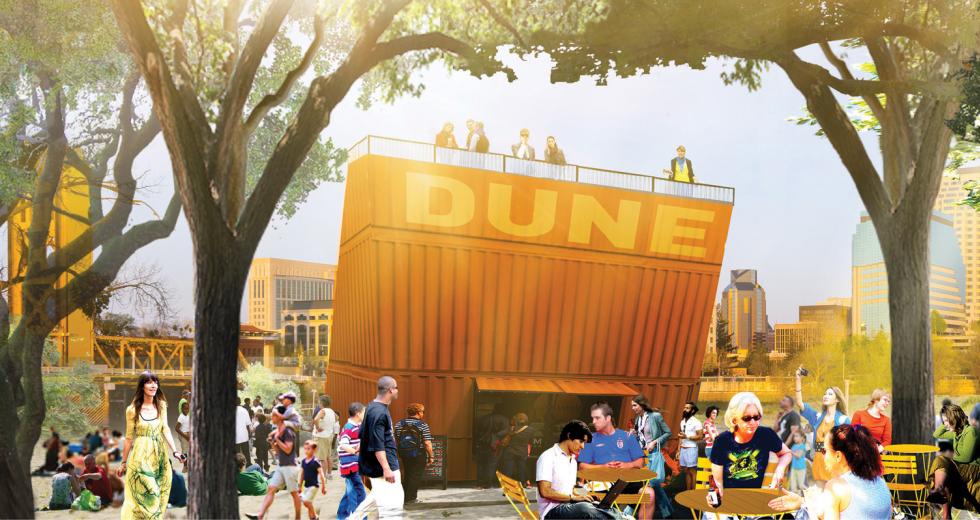Once upon a time, Sacramento lived and died by its rivers. As the last outpost of good society on the way to the Gold Rush foothills, Sacramento was nestled conveniently at the confluence of both the American and Sacramento rivers. Eventually, prospectors’ shanty tents pitched along these rivers turned into a thriving boomtown — ultimately becoming the capital of the newly-minted state of California and home to millions in the Sacramento Valley.
But what about now? It’s been well over 150 years since shouts of “Eureka!” echoed along the region’s riverbanks, and today’s connection to the water that once brought opportunity and prosperity seems to have ebbed with the tide. Are our rivers even a part of Sacramento’s identity anymore, or are they just a feature of the land we occasionally glance at, while driving along Interstate 80?
That’s a question Kimberly Garza and Andrew tenBrink of Atlas Lab, a design and research lab, are trying to answer, and a dismissive attitude they’re determined to change. The young entrepreneurs recently won MetroEdge’s “Pitch for Change” contest with “The Dune” project, which was selected as the favorite proposal by attendees of the Emerge Summit in March. The 2016 Emerge Summit, sponsored by MetroEdge, was the third annual day-long conference for young entrepreneurs in the Sacramento area to connect, collaborate and create; however, this was the first year that the Pitch for Change contest occurred at the summit.
(Renderings: Courtesy of Atlas Lab)

Though there’s no confirmed location yet, and the project is still in the early planning stages, Garza and tenBrink conceived an idea to reclaim a section of unused (and often unloved) riverbank and build an unusual urban park: a slice of land and sand, sloped at a slight angle with a flat space at the base that can be used for events, sports and community gatherings. The walls of The Dune will be formed from a shipping container, and will provide a space for fliers, art and maybe a concession stand inside. The sloped seating area will be perfect for movie nights, events or even just viewing the river from a different point of view, tenBrink says.
Garza, who is a Natomas native, and tenBrink — who she met while both were studying at Harvard Graduate School of Design — say they just want to get people excited about the river again, and to do so in a way that blurs the line between art and landscape. The Dune will mimic its surroundings, and be more than just a grassy play area. “Historically, there used to be sand dunes [on the river] … naturally occurring dunes all the way to Antioch. We wanted to evoke that and reference that, and bring attention to historical fact and a slice of the ecology,” she says. “We really want it to be accessible for the entire region … for people to just get up and play on it.”
By winning MetroEdge’s contest, Garza and tenBrink will have access to $5,000-worth of marketing services from local creative firm, Uptown Studios, and personal mentoring from the company’s president, Tina Reynolds. They’re working on getting the first Dune up and running but have aspirational plans for many more installations. Right now, Garza says, the team is just beginning the process of identifying key stakeholders, location, budget and design development.
(Renderings: Courtesy of Atlas Lab)

They hope to place the first Dune on the West Sacramento riverbank, overlooking the downtown Sacramento skyline, but tenBrink says they’re open to looking at other locations, and they’ll have to, should the project progress beyond one installation. “We want it to be in a place that’s accessible, but it can be almost anywhere,” he says, so long as it “highlights the interesting aspects of the river.” Because West Sacramento is “really developing its river edge” right now; options on that side of the bank are booming, he says.
“Young professionals want more of this, they want places to be in, and to activate these areas,” Garza says. The team hopes that The Dune project will bring the community back to the river, and just maybe, lead our city to another prosperous relationship with the waterways of the Sacramento Valley.



